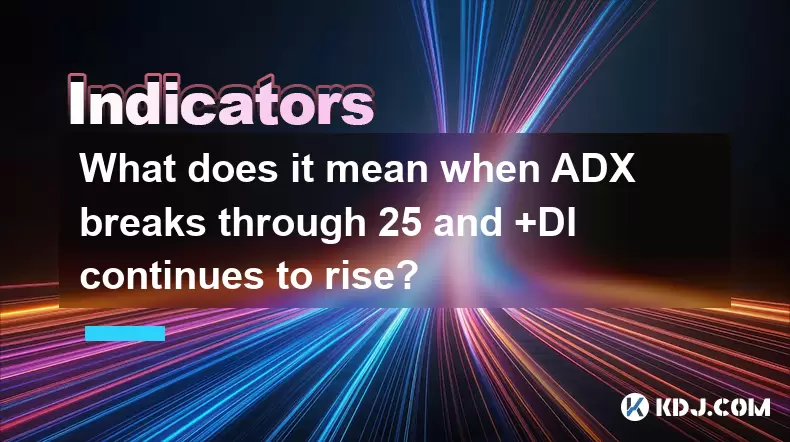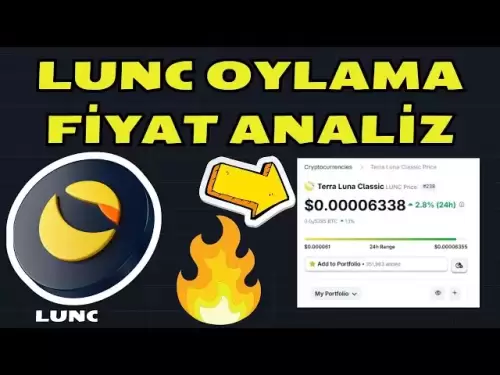-
 Bitcoin
Bitcoin $118000
0.67% -
 Ethereum
Ethereum $3750
0.71% -
 XRP
XRP $3.183
1.61% -
 Tether USDt
Tether USDt $1.000
-0.01% -
 BNB
BNB $788.1
1.21% -
 Solana
Solana $186.0
0.85% -
 USDC
USDC $0.9999
-0.02% -
 Dogecoin
Dogecoin $0.2373
1.25% -
 TRON
TRON $0.3204
1.76% -
 Cardano
Cardano $0.8266
1.85% -
 Hyperliquid
Hyperliquid $44.04
1.28% -
 Sui
Sui $4.192
5.88% -
 Stellar
Stellar $0.4399
2.63% -
 Chainlink
Chainlink $18.40
1.19% -
 Hedera
Hedera $0.2842
9.06% -
 Bitcoin Cash
Bitcoin Cash $560.5
2.46% -
 Avalanche
Avalanche $24.99
4.58% -
 Litecoin
Litecoin $114.5
1.25% -
 UNUS SED LEO
UNUS SED LEO $8.980
-0.03% -
 Shiba Inu
Shiba Inu $0.00001406
0.53% -
 Toncoin
Toncoin $3.306
4.27% -
 Ethena USDe
Ethena USDe $1.001
0.03% -
 Polkadot
Polkadot $4.169
2.37% -
 Uniswap
Uniswap $10.56
1.95% -
 Monero
Monero $322.8
1.06% -
 Dai
Dai $0.0000
0.00% -
 Bitget Token
Bitget Token $4.545
0.12% -
 Pepe
Pepe $0.00001261
1.29% -
 Aave
Aave $296.5
1.27% -
 Cronos
Cronos $0.1379
5.90%
What does it mean that the price falls below the short-term moving average after the RSI top divergence?
An RSI top divergence combined with price closing below the short-term SMA signals weakening bullish momentum and a potential trend reversal, especially on higher timeframes.
Jul 26, 2025 at 11:01 pm

Understanding RSI Top Divergence in Cryptocurrency Trading
The Relative Strength Index (RSI) is a momentum oscillator widely used in cryptocurrency trading to measure the speed and change of price movements. An RSI top divergence occurs when the price of a cryptocurrency makes a higher high, but the RSI indicator forms a lower high. This discrepancy signals that upward momentum is weakening, even though the price continues to rise. Traders interpret this as a potential reversal signal, indicating that bullish strength is fading and a downward correction may follow. The divergence suggests that buying pressure is diminishing, despite the apparent strength in price.
When an RSI top divergence appears, it does not guarantee an immediate price drop. Instead, it serves as a warning that the current uptrend may be losing steam. The significance increases when this divergence forms near overbought territory, typically when the RSI value is above 70. In such cases, the market may be overextended, and a pullback becomes more likely. However, confirmation from additional indicators or price action is often required before taking action.
Role of the Short-Term Moving Average in Confirming Reversals
A short-term moving average (SMA), such as the 9-day or 10-day SMA, is commonly used to track recent price trends. It smooths out price data to create a single flowing line, making it easier to identify the direction of momentum. When the price of a cryptocurrency is above its short-term moving average, it generally reflects bullish sentiment. Conversely, when the price falls below this average, it may signal a shift in momentum toward the bearish side.
The moment the price drops below the short-term moving average after an RSI top divergence, it adds weight to the bearish interpretation. This combination suggests that not only is momentum weakening (as shown by the divergence), but the price is now breaking below a key support level represented by the moving average. This dual signal increases the likelihood of a trend reversal from bullish to bearish. The moving average acts as dynamic support during uptrends, and its breach indicates that short-term traders are losing confidence.
Interpreting the Combined Signal: Price Below SMA Post-Divergence
When both conditions are met—RSI top divergence and price falling below the short-term moving average—traders often treat this as a strong bearish confirmation. The sequence typically unfolds as follows:
- The cryptocurrency reaches a new peak in price.
- The RSI fails to surpass its previous high, forming a lower high.
- After the peak, the price begins to decline.
- The decline continues until the price closes below the short-term moving average.
Each of these steps contributes to the overall bearish outlook. The failure of momentum (RSI) to confirm the new price high is the first red flag. The subsequent drop below the moving average confirms that short-term support has been broken. This combination is particularly significant on higher timeframes, such as the 4-hour or daily charts, where signals tend to be more reliable due to reduced market noise.
Practical Steps to Identify and Respond to This Signal
Traders can follow a structured approach to identify and act on this signal within a cryptocurrency trading platform like TradingView or Binance. Here are the necessary steps:
- Open a price chart for the cryptocurrency of interest (e.g., BTC/USDT).
- Apply the RSI indicator with default settings (14-period) to the chart.
- Look for a situation where the price makes a higher high, but the RSI makes a lower high—this is the top divergence.
- Add a short-term moving average, such as the 9-day SMA, to the price chart.
- Wait for the price to close below the moving average after the divergence is confirmed.
- Consider entering a short position or exiting a long position once the close is confirmed below the SMA.
It is crucial to use candlestick closes, not intrabar moves, to confirm the breach. For example, if the 1-hour chart is being used, wait for the full hour to complete and the closing price to settle below the SMA. This avoids false signals caused by temporary price spikes. Additionally, placing a stop-loss just above the recent swing high can help manage risk in case the reversal fails.
Volume and Additional Confirmation Tools
Volume plays a critical role in validating this type of signal. A drop in volume during the price rise preceding the divergence can reinforce the idea of weakening momentum. Conversely, an increase in volume as the price breaks below the short-term moving average strengthens the bearish case. High selling volume on the breakdown suggests that market participants are actively exiting long positions or initiating shorts.
Other tools can also be used alongside RSI and moving averages:
- MACD (Moving Average Convergence Divergence): A bearish crossover after the divergence adds confirmation.
- Support and resistance levels: If the breakdown occurs near a known resistance-turned-support level, the signal gains strength.
- Candlestick patterns: Bearish patterns like engulfing candles or shooting stars near the moving average can provide additional entry timing.
Using multiple layers of confirmation reduces the risk of acting on false signals, which are common in volatile cryptocurrency markets.
Frequently Asked Questions
What timeframes are best for detecting RSI top divergence followed by a moving average break?
The 4-hour and daily charts are generally preferred for identifying reliable RSI top divergences. These timeframes filter out short-term noise and provide more meaningful signals. Lower timeframes like 5-minute or 15-minute charts can generate frequent but less reliable divergences due to market volatility.
Can this signal appear in sideways markets?
Yes, RSI top divergence can occur in ranging markets, especially near the upper boundary of a trading channel. However, the signal is less reliable in such environments because the price may bounce off support without a sustained downtrend. The breakdown below the short-term moving average in a sideways market may be temporary and should be evaluated with additional context.
Does the length of the moving average affect the signal’s strength?
Yes, the choice of moving average impacts sensitivity. A 9-day SMA reacts faster to price changes than a 20-day SMA. A break below a 9-day SMA may occur earlier but could result in more false signals. A longer SMA provides stronger support but may delay the signal. Traders often use both to assess short-term and intermediate-term momentum.
Is RSI top divergence always followed by a price drop below the moving average?
No, not always. RSI top divergence indicates weakening momentum, but the price may continue to consolidate or even rise further without breaking below the moving average. Some divergences fail, especially in strong trending markets where momentum can persist despite overbought conditions. Confirmation through price action is essential.
Disclaimer:info@kdj.com
The information provided is not trading advice. kdj.com does not assume any responsibility for any investments made based on the information provided in this article. Cryptocurrencies are highly volatile and it is highly recommended that you invest with caution after thorough research!
If you believe that the content used on this website infringes your copyright, please contact us immediately (info@kdj.com) and we will delete it promptly.
- Ruvi AI: Riding the Token Explosion Wave After CoinMarketCap Listing
- 2025-07-27 06:30:12
- Commemorative Coin Spotlight: Acharya Mahapragya and the Circuit de Spa-Francorchamps Coin Issue
- 2025-07-27 06:30:12
- Bitcoin Targets New All-Time Highs: Trader's Bullish $127,000 Target
- 2025-07-27 04:50:12
- Bitcoin Price Dip? Smart Investors Buy Crypto Presales Now!
- 2025-07-27 04:30:12
- Pepe Price, Meme Coins, and Investments: What's the Hype?
- 2025-07-27 05:30:13
- XRP & Ripplecoin Cloud Mining: A New Era of Earning or Just Hot Air?
- 2025-07-27 05:30:14
Related knowledge

What does it mean that the rebound is blocked after the moving average is arranged in a short position for the first time?
Jul 26,2025 at 10:51am
Understanding the Short-Term Moving Average ConfigurationWhen traders refer to a 'short position arrangement' in moving averages, they are describing ...

What does it mean that the parabolic indicator and the price break through the previous high at the same time?
Jul 26,2025 at 07:22pm
Understanding the Parabolic Indicator (SAR)The Parabolic SAR (Stop and Reverse) is a technical analysis tool developed by J. Welles Wilder to identify...

What does it mean that the price falls below the short-term moving average after the RSI top divergence?
Jul 26,2025 at 11:01pm
Understanding RSI Top Divergence in Cryptocurrency TradingThe Relative Strength Index (RSI) is a momentum oscillator widely used in cryptocurrency tra...

What does it mean when the moving average is arranged in a bullish pattern but the MACD bar is shortened?
Jul 27,2025 at 06:07am
Understanding the Bullish Moving Average PatternWhen traders observe a bullish moving average pattern, they typically refer to a configuration where s...

What does it mean when the price rises along the 5-day moving average for five consecutive days?
Jul 26,2025 at 08:07am
Understanding the 5-Day Moving Average in Cryptocurrency TradingThe 5-day moving average (5DMA) is a widely used technical indicator in cryptocurrency...

What does it mean when ADX breaks through 25 and +DI continues to rise?
Jul 26,2025 at 07:00pm
Understanding the ADX Indicator and Its ThresholdsThe Average Directional Index (ADX) is a technical analysis tool used to measure the strength of a t...

What does it mean that the rebound is blocked after the moving average is arranged in a short position for the first time?
Jul 26,2025 at 10:51am
Understanding the Short-Term Moving Average ConfigurationWhen traders refer to a 'short position arrangement' in moving averages, they are describing ...

What does it mean that the parabolic indicator and the price break through the previous high at the same time?
Jul 26,2025 at 07:22pm
Understanding the Parabolic Indicator (SAR)The Parabolic SAR (Stop and Reverse) is a technical analysis tool developed by J. Welles Wilder to identify...

What does it mean that the price falls below the short-term moving average after the RSI top divergence?
Jul 26,2025 at 11:01pm
Understanding RSI Top Divergence in Cryptocurrency TradingThe Relative Strength Index (RSI) is a momentum oscillator widely used in cryptocurrency tra...

What does it mean when the moving average is arranged in a bullish pattern but the MACD bar is shortened?
Jul 27,2025 at 06:07am
Understanding the Bullish Moving Average PatternWhen traders observe a bullish moving average pattern, they typically refer to a configuration where s...

What does it mean when the price rises along the 5-day moving average for five consecutive days?
Jul 26,2025 at 08:07am
Understanding the 5-Day Moving Average in Cryptocurrency TradingThe 5-day moving average (5DMA) is a widely used technical indicator in cryptocurrency...

What does it mean when ADX breaks through 25 and +DI continues to rise?
Jul 26,2025 at 07:00pm
Understanding the ADX Indicator and Its ThresholdsThe Average Directional Index (ADX) is a technical analysis tool used to measure the strength of a t...
See all articles

























































































